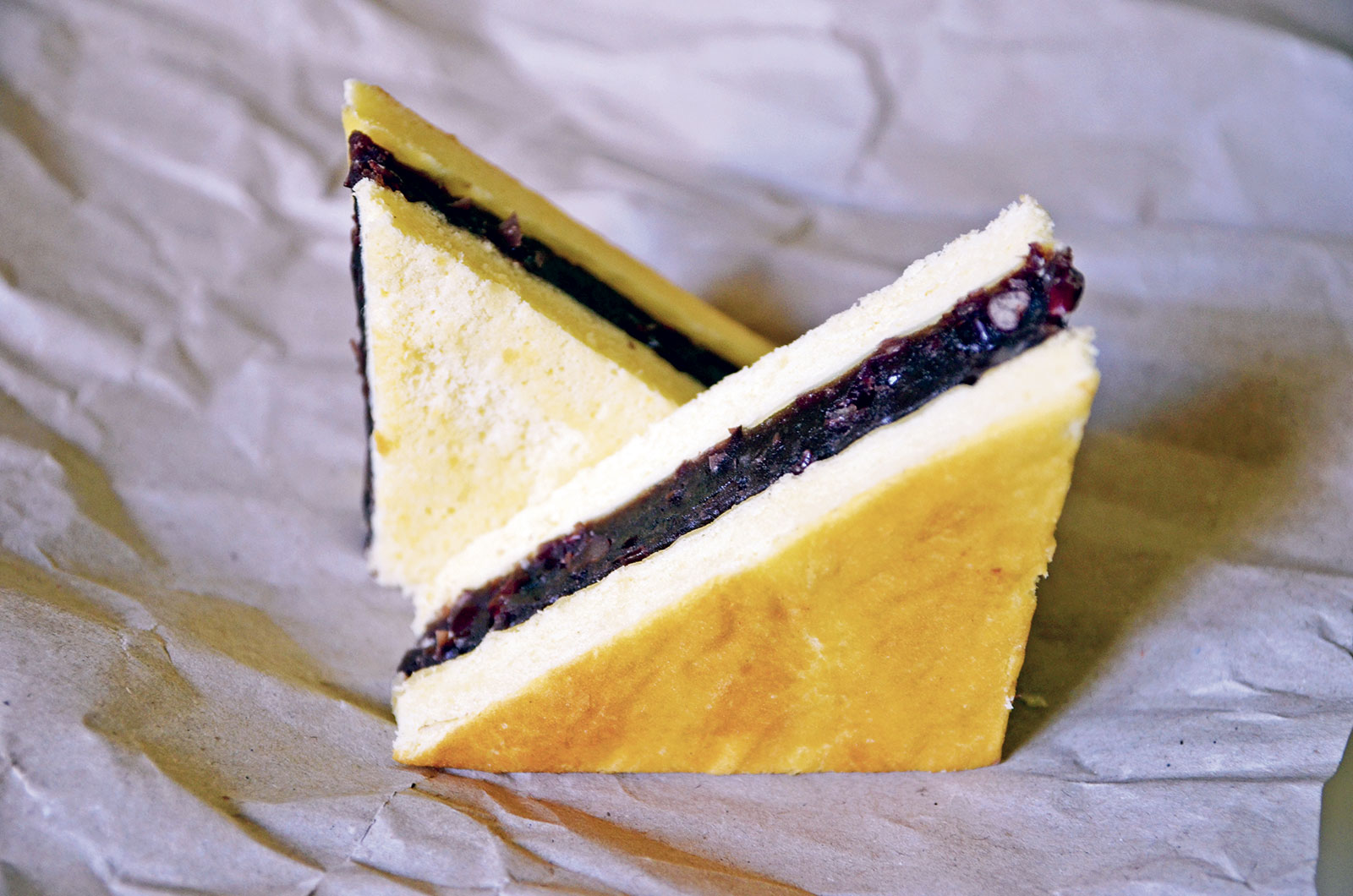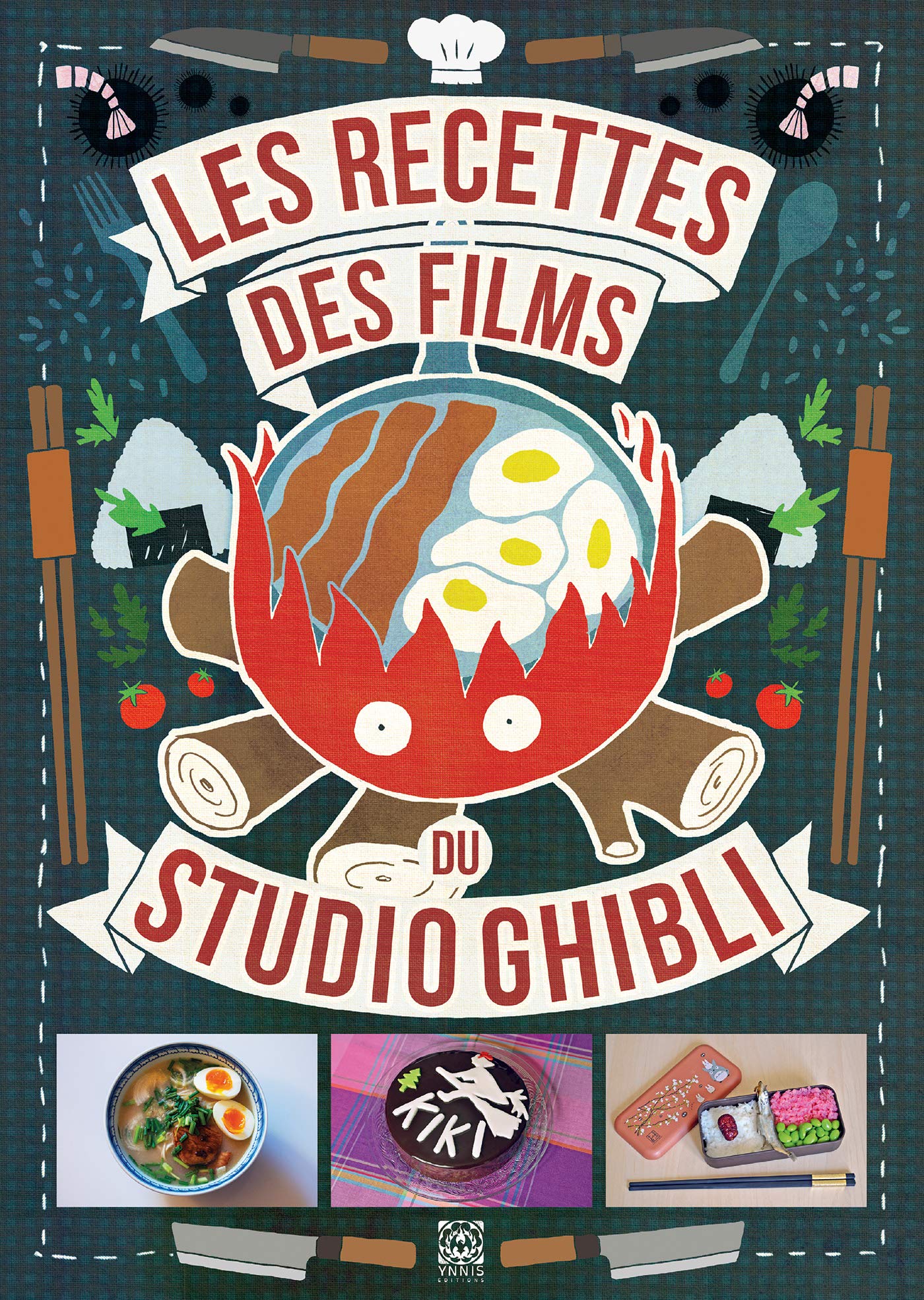Recipe for Castella Siberia from ‘The Wind Rises’
This sponge filled with red beans, popular in the 1920s and 1930s, came back into fashion thanks to the Hayao Miyazaki film.

© Apolline Cartier
The book Les recettes japonaises du studio Ghibli (‘Japanese Recipes from Studio Ghibli’) compiles a selection of the most appetising dishes from these Japanese animated classics. One example is these castella Siberia, cakes enjoyed by the hero in The Wind Rises, released in 2013, the story of which is inspired by the life of Giovanni Caproni. The protagonist, Jiro Horikoshi, is passionate about aviation but his poor sight prevents him from becoming a pilot. As a result, he gets a job as an aeronautical engineer.
Jiro Horikoshi is also a food lover and a great fan of castella Siberia, a cake extremely popular in Japan in the 1920s and 1930s, made from a sort of sponge named kasutera or castella and filled with a layer of red bean paste made from the famous azuki. At nightfall, after he has just bought some from a shop, he encounters a group of young children waiting for their parents and offers them his cake to pass the time, but they decline.
Castella Siberia had disappeared from the shelves in pâtisseries and konbini but benefited from the success of The Wind Rises and came back into fashion.
Serves 8
Ingredients
115 g unsalted butter
115 ml whole milk
7 eggs
115 g flour
115 g sugar
120 ml water
500 g red bean paste
10 g agar-agar
Method
Place the butter and milk in a saucepan over a medium heat, mixing regularly. When it has all melted, remove from the heat to let it cool.
Separate the yolks from the egg whites into two different containers. Sieve the flour into a salad bowl and incorporate the cool mixture to form a dough. Add the egg yolks in three instalments and beat.
Beat the egg whites while slowly adding the sugar. The aim is to form a light, liquid meringue that stays on the whisk.
Gradually add the meringue to the dough and mix a little at a time to obtain a mixture that is all the same colour.
Preheat the oven to 150 degrees. Pour the paste into a large pan lined with greaseproof paper. Place the pan in a drip tray with a little water. Bake at 150 degrees for one hour, then remove and leave to cool for 10 minutes before turning the cake out.
While the cake is cooling, boil 120 ml water, pour in the red bean paste and the agar-agar, and heat until dissolved completely. Leave to cool.
Cut the cake in half, then spread the red bean paste on one of the halves in a uniform manner. Place the other half on top, exposing the more golden side, and place the whole thing in the fridge for four hours.
Cut into triangles before serving.
Les recettes du studio Ghibli (‘Japanese Recipes from Studio Ghibli’) (2020), a recipe book by Minh-Tri Vo, is published by Ynnis (not currently available in English).

© Ynnis Éditions
TRENDING
-
The Tattoos that Marked the Criminals of the Edo Period
Traditional tattoos were strong signifiers; murderers had head tattoos, while theft might result in an arm tattoo.

-
Paris, Tokyo: Robert Compagnon
With his co-chef and talented wife, Jessica Yang, Robert Compagnon opened one of the top new restaurants in Paris: Le Rigmarole.
 3:31
3:31 -
Chiharu Shiota, Red Threads of the Soul
Last year, more than 660,000 people visited the retrospective 'Chiharu Shiota: The Soul Trembles' exhibit at the Mori Art Museum.

-
‘Before Doubting Others, Doubt Yourself. Who Can Truly Say a Dish Isn’t What It Used to Be?’
In ‘A Non-Conformist’s Guide to Surviving Society’, author Satoshi Ogawa shares his strategies for navigating everyday life.

-
The Story of Sada Yacco, the Geisha who Bewitched Europe
Described by Dazed magazine as the first beauty influencer, she has been restored to her former glory since 2019.





